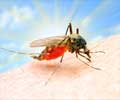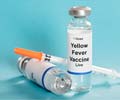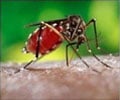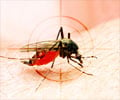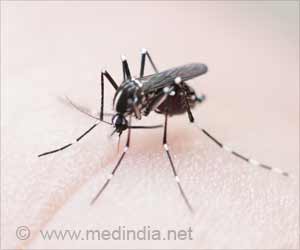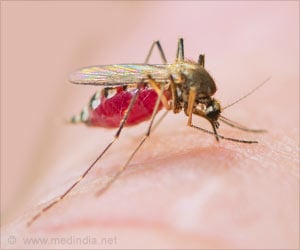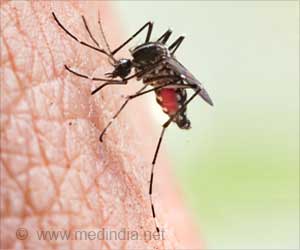Biologists at Purdue University have found how the dengue virus matures and becomes infectious. Dengue is prevalent in Southeast Asia, Central America and South America. The virus,
Biologists at Purdue University have found how the dengue virus matures and becomes infectious.
Dengue is prevalent in Southeast Asia, Central America and South America. The virus, which is spread by mosquitoes, infects more than 50 million people annually, killing about 24,000 each year, primarily in tropical regions.The researchers found that critical changes take place as the virus is assembled and moves from the inner to the outer portions of its host cell before being secreted so that it can infect other cells.
They noted that virus particles are exposed to progressively less acidic conditions as they traverse this "secretory pathway," and this changing acidity plays a vital role in its maturation.
The study was led by Michael Rossmann, the Hanley Distinguished Professor of Biological Sciences, Jue Chen, an associate professor of biological sciences, and I-Mei Yu, a postdoctoral research associate working with Chen; and Long Li, a doctoral student working with Rossmann.
The dengue virus moves through compartments inside the cell called the endoplasmic reticulum and the trans-Golgi network.
While immature, virus particles are incapable of fusing with cell membranes, preventing them from infecting their own host cells and ensuring their maturation. Once mature, however, it is able to fuse to cell membranes, a trait that enables virus particles to infect new host cells.
Advertisement
Researchers mimicked the trans-Golgi network environment in test tubes, enabling them to study the virus's changing structure with increasing acidity.
Advertisement
The precursor membrane protein prevents the immature virus from fusing with membranes by covering an attachment site in the envelope protein.
During maturation, an enzyme called furin snips the connection between the two proteins, eventually exposing the envelope protein site and enabling the virus to fuse with membranes.
Yu learned, however, that the precursor membrane protein remains in place until the virus is ready to exit the original host cell. The researchers used a technique called cryoelectron microscopy to gain a more detailed view of the virus.
"So, the precursor membrane protein is retained on the virus surface even after the enzyme detaches the two proteins. This is a critical step because the virus is ready to mature but still is incapable of fusing with membranes until after it exits its own cell," Chen said.
The researchers also determined that the environment must be acidic before the enzyme will snip the two proteins, and they examined the structure to learn specifically why the increased acidity is needed.
Li used fruit fly cells to produce large quantities of the linked proteins so that researchers could study them with a method called X-ray crystallography. Using crystallography, the researchers were able to visualize and study the combined structure of the precursor membrane and envelope proteins.
To produce the complex of the two proteins, Li first had to replace the insoluble "transmembrane region" of the protein with a soluble segment, a step essential for using the fruit fly cells to manufacture the proteins. He also had to mutate the protein to remove sites where furin normally attaches, preventing the proteins from being snipped apart.
The precursor membrane protein is about as wide as 50 nanometers, or billionths of a meter, and the envelope protein is about 3 nanometers, or nearly atomic-scale. A nanometer is about the size of 10 hydrogen atoms strung together.
The research has been funded primarily by the National Institutes of Health. Rossmann's and Chen's research laboratories are affiliated with Purdue's Markey Center for Structural Biology.
The study and its findings are published in two back-to-back research papers appearing Friday (March 28) in the journal Science.
Source-ANI
VEN/M


